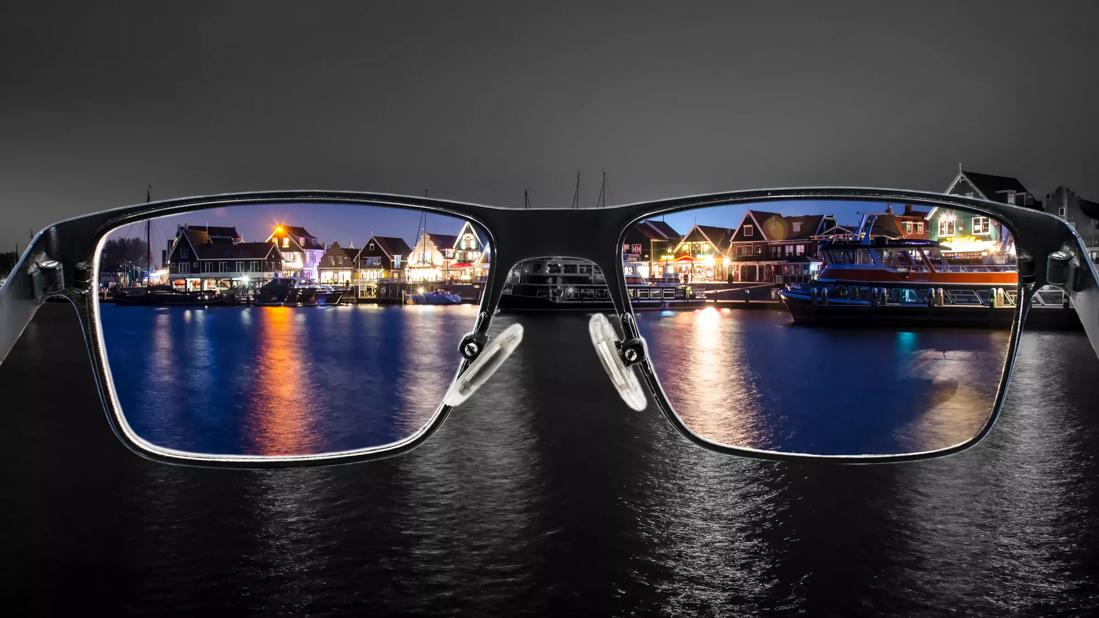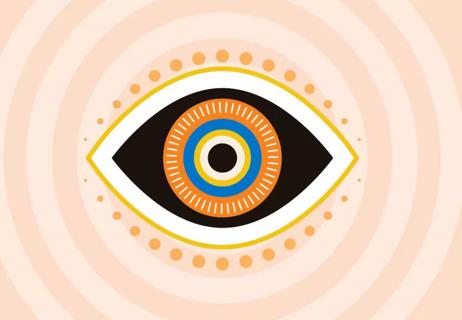These trendy glasses might brighten some shades and help you see the difference between colors or brightness of hues, but they won’t cure your color vision deficiency

Viral videos of people living with color blindness (color vision deficiency) and trying on color blind glasses are the kind of videos that hit you right in the feels.
Advertisement
Cleveland Clinic is a non-profit academic medical center. Advertising on our site helps support our mission. We do not endorse non-Cleveland Clinic products or services. Policy
These videos circulating online on places like TikTok, Reddit and Instagram usually focus on someone with a color vision deficiency putting on a pair of color blind glasses for the first time. When they look up, they suddenly have a visceral, emotional reaction to presumably seeing “new colors” for the very first time. They cry and gasp as they point to colored balloons, distinctly naming the different colors now that they’re able to determine the difference between varying shades of reds, blues, purples and pinks. They survey horizons with a setting sun and a new worldview that’s now in streaming color.
It’s enough to make anyone cry ... but do color blind glasses really have the power to reverse or correct color blindness? Can specially designed filters cure color vision deficiency and help you see the world in new ways? Or is it all too good to be true?
According to pediatric optometrist Alexandra Williamson, OD, color blind glasses might not be all they appear to be, and they’re certainly not a cure for color vision deficiency.
Color blind glasses can’t cure color vision deficiency and they can’t reverse or correct color blindness, at least not in the traditional sense that many people might expect from watching the viral videos circulating online.
Advertisement
Color blindness is largely inherited, meaning you’re born with it. You can also acquire some types of color vision deficiency later in life if you have other underlying medical conditions that affect your optic nerves, retina, brain or nervous system like:
In most cases, people who have a color vision deficiency don’t see a world without color in shades of black and white. Contrary to popular belief, people who are color blind still see colors, but they see them differently than trichromatic vision (or vision that sees all colors on the visible spectrum).
In most cases, people who have a color vision deficiency might have a difficult time discerning one color from another or one shade from the next. It’s like looking at an object far off in the distance and being unable to determine whether or not it’s red, orange or brown — only, it’s like that with everything all the time no matter the distance.
These changes to your ability to detect or identify specific colors occur as a result of damage or dysfunction to cells (called cones) in your eye that detect specific wavelengths in the visible spectrum of light.
Red-green color deficiency is the most common type of color blindness, and it affects your perception of colors and shades that contain elements of red or green light. For example, someone with this kind of color vision deficiency might confuse red with brown, while blues and yellows pop.
Then, there are rare types of color vision deficiency like achromatopsia, which is an inherited vision disorder present at birth that causes your vision to be limited to shades of black, white and gray — a world without color.
“Color vision deficiency is due to altered function of cells that can’t be replaced,” says Dr. Williamson. “So, there are no treatments for color vision defects.”
When you wear color blind glasses, you’re not correcting the missing cones or receptors of color in your eyes. Instead, it’s like putting a specialized filter in front of your vision that helps brighten some shades over others. You can think of color blind glasses, then, more like contrast eyeglasses where if you have minor or moderate forms of some types of color vision deficiency, they may help you determine the difference between colors or brightness of hues — but they won’t reveal new colors or bring back new forms of color vision.
Advertisement
So, if you have red-green color deficiency and you wear color blind glasses, rather than see the actual color purple and its red components, you might notice slightly better contrast between blues and purples so that you can tell they’re slightly different from one another. Reds might appear more pink while browns might appear less black. And overall, there might be a rose-colored hue to everything you see.
“These devices do not alter genetics or the health of a person, so they don’t solve the underlying condition,” explains Dr. Williamson. “Essentially, anything placed in front of the eye affects how light enters it — whether this effect is focusing light rays, like a prescription lens, blocking light like a patch, or filtering light in some way like polarizing or tinted sunglasses. As an example, there is a company that makes contact lenses with a red filter, and some individuals who have a color vision deficiency use this in one eye to better distinguish between colors as needed.”
Studies have shown that, while color blind glasses won’t allow someone with a color vision deficiency to see all the colors on the visible spectrum, they may help increase the contrast between colors. The reason this happens is because some of the light coming through the lens is blocked, allowing for less color overlap.
Advertisement
“Many times, the way these devices claim to work is proprietary and not shared by the company, and since no one can walk in another’s shoes regarding vision perception, it’s hard to know if there is a placebo effect when people have these reactions to wearing these glasses,” clarifies Dr. Williamson.
“But I can tell you that a red filter absorbs some light, which may possibly reduce some of the ‘noise’ as light is sent to the retina, and that may help an individual differentiate between different colors.”
So far, claims from companies that these color blind glasses have the technology to “correct” red-green color deficiency have not been supported by scientific evidence, and studies are not supportive of the use of these glasses for the improvement of color discrimination.
Color blind glasses aren’t cheap. Depending on where you purchase them, they can range from $100 to $400 or more. Before spending that kind of cash, it may be in your best interest to make an appointment with an optometrist to talk about your concerns regarding your color vision deficiency or any other issues you’re having involving your vision to see whether or not they would advise this kind of eyewear and its potential pros and cons.
Advertisement
“The American Optometric Association recommends annual eye exams for healthy individuals,” notes Dr. Williamson. “If new concerns arise, including perceived changes in color vision, a visit to an optometrist or ophthalmologist is warranted.”
Color blind glasses and their ability to contrast difference in color are only effective as long as you’re actively wearing them. That means your color vision deficiency won’t improve over time the more you wear these glasses. But while wearing them, you may notice a difference in your ability to determine slight differences in color variation depending on the kind of color vision deficiency you have and how severe it is.
If you wear them occasionally and feel fine doing so, that’s OK. But if you feel like they’re negatively affecting your vision, you’re experiencing headaches, eye irritation or any other side effects involving your vision that are cause for concern, you should stop wearing them and speak to an optometrist about the symptoms you’re experiencing.
The American Academy of Ophthalmology also notes that you shouldn’t wear color blind glasses at night or while driving because these glasses limit the amount of light that makes contact with your retina and can cause problems with vision and reaction time.
In essence, you should treat color blind glasses the same as you would sunglasses — don’t wear them at night unless you’re at an ‘80s-themed dance party.
Learn more about our editorial process.
Advertisement

Some eye conditions can have more noticeable effects at night

Combat blurry night vision and see more clearly with these expert tips

Tips for protecting and preserving your eyesight

It usually takes anywhere from a couple of days to a few weeks to get fully adjusted

Too much blue light, especially from digital sources, may lead to eye strain and computer vision syndrome

Having a first-degree biological relative with this eye condition raises your risk, but other factors are at play, too

When worn incorrectly, contacts can cause or worsen dry eye symptoms

Having a family history of glaucoma is one of the biggest risk factors for developing the condition yourself

You can improve your athletic performance over time by breaking up your workout regimen into focused cycles

The little blue pill might help with physical arousal, but there are better treatments for low libido in women

Sleep issues and certain foods can lead to an early morning headache